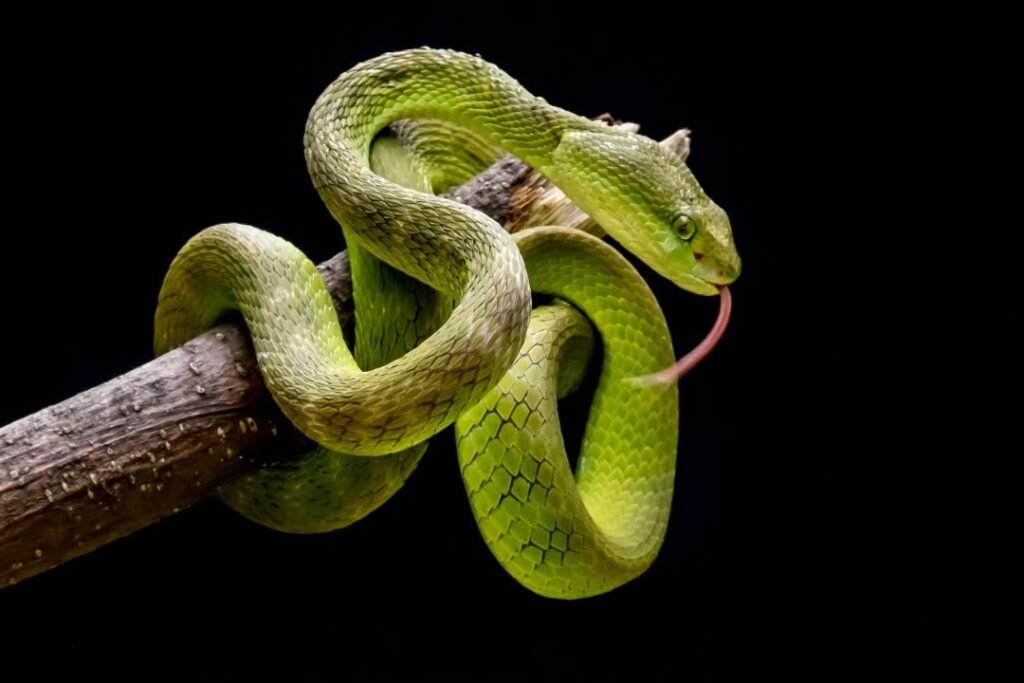Introduction to Komodo Herping Tours
Komodo Herping Tours-Herping, a term derived from the word “herpetology,” refers to the act of searching for reptiles and amphibians in their natural habitats. It encompasses a wide range of activities, including observing, studying, and photographing these fascinating creatures. One of the most esteemed locations for herping enthusiasts is Komodo National Park, which is renowned for its remarkable biodiversity and, notably, its snake population. This park, a UNESCO World Heritage site, offers a unique opportunity for wildlife enthusiasts and researchers alike to engage in the observation of snakes in their natural environment.
Komodo National Park, located in Indonesia, is not only famous for its iconic Komodo dragons but also serves as a habitat for various snake species. The park’s diverse ecosystems, which include coastal mangroves, savannah, and mountainous regions, provide a rich backdrop for herping adventures. During herping tours, one can expect to encounter snakes such as the water snake, the king cobra, and the python, among others. Each of these species displays distinct behaviors and adaptations that make the experience of observing them both educational and thrilling.
Participating in Komodo herping tours holds great significance for both conservation efforts and personal enrichment. By engaging with experts and local guides, herpers can gain insights into the ecological importance of snakes within their habitats. Moreover, these tours promote sustainable tourism by fostering awareness of the need to protect fragile ecosystems. Visitors to Komodo National Park will not only witness the beauty of these reptiles but also develop an appreciation for their role in maintaining ecological balance. Thus, herping in this breathtaking landscape paves the way for memorable wildlife experiences enriched by knowledge, respect, and passion for nature.
Overview of Komodo National Park
Komodo National Park, located in Indonesia, is a renowned UNESCO World Heritage Site that attracts thousands of visitors each year, particularly those interested in wildlife, biodiversity, and herping experiences. Established in 1980, the park encompasses over 1,700 square kilometers of land and sea, making it an expansive area rich in ecological variety. The park is famously known for its population of Komodo dragons, but it is also a vital habitat for various snake species, contributing to its reputation as a hotspot for enthusiasts and researchers alike.
The geographical features of Komodo National Park are striking and diverse. The park comprises several islands, including Komodo, Rinca, and Padar, and displays a blend of rugged landscapes, steep hills, and pristine beaches. This topography creates distinct niches and microenvironments which support numerous flora and fauna. The climate of the region varies throughout the year, with a distinct dry season and a wet season, further influencing the ecosystems within the park.
Komodo National Park is characterized by its rich ecosystems, including savannahs, tropical forests, and coral reefs. These habitats are crucial for a wide range of species; reptiles, mammals, birds, and marine life thrive in the area. Among these, snakes play an essential role in maintaining the ecological balance. Various species of snakes can be found in Komodo National Park, ranging from the non-venomous to the more elusive venomous types. The diversity of snakes, combined with the park’s stunning natural beauty and unique wildlife, makes it a compelling destination for herping tours.
The 13 Snake Species of Komodo National Park
Komodo National Park, renowned for its unique biodiversity, is home to a variety of snake species. Among these, 13 distinct species have been identified. This diverse assemblage reflects the unique habitat conditions of the park, which range from dry forests to coastal wetlands. Each of these snake species plays a vital role in their respective ecosystems, contributing to the balance of local wildlife.
One of the prominent species is the Trimeresurus insularis, commonly known as the island pit viper. This snake is often characterized by its vibrant green color, which serves as excellent camouflage among the lush vegetation. The island pit viper primarily inhabits forested areas, where it can be found waiting patiently for small mammals and birds to pass by as it hunts. Its venomous bite is a defense mechanism against potential threats.
Another noteworthy species is the Naja sputatrix, or the blue-spotted snake. This species is easily recognizable by its striking coloration, featuring a combination of dark and bright hues. The blue-spotted snake frequently resides in coastal areas and is often seen basking on rocks. While it possesses venom, it generally uses it to subdue prey rather than as a defensive strategy. Understanding its behavior and habitat preferences provides valuable insight into the biodiversity of the park.
Other notable species include the Reticulated Python (Malayopython reticulatus), known for its impressive size, and the common wolf snake (Lycodon alveatus), recognized for its slender body and distinct patterns. Each of these species exhibits unique traits and ecological roles that enrich the overall biodiversity of Komodo National Park. Exploring these snakes provides enthusiasts with a deeper appreciation for the delicate ecosystems present in this remarkable environment.
Best Times for Herping: Night vs. Morning
When planning a herping adventure in Komodo National Park, choosing the right time of day is essential for a successful experience. The two primary time slots for herping activities are the evening hours, particularly from 19:00 PM to 22:00 PM, and the early morning hours, from 06:00 AM to 10:00 AM. Each of these times offers unique advantages that can significantly enhance the chances of encountering various snake species.
Nighttime herping sessions are particularly advantageous for locating elusive green snakes, which are renowned for their striking coloration and arboreal habits. As the sun sets, these snakes become more active, making the evening an ideal time for enthusiasts aiming to observe these fascinating creatures in their natural habitat. The lower temperatures at night also encourage these reptiles to emerge from their hiding spots, offering greater visibility for herpers. Additionally, night provides an opportunity to experience the nocturnal wildlife of Komodo, enriching the overall herping experience.
On the other hand, morning outings are highly recommended for encountering king cobras, which tend to be most active during this time. As the day begins and temperatures rise, these snakes can often be spotted basking in the sun or hunting for prey. The morning light not only aids visibility but also creates ideal conditions for herpers to accurately identify different species of snakes. Observing king cobras during their active morning period can be particularly thrilling, as it allows enthusiasts to witness their magnificent behavior and natural movements.
In summary, both night and morning sessions offer valuable opportunities for herping in Komodo National Park, with distinct benefits for different species. Choosing the right time based on the snakes you aim to observe can greatly enhance your herping adventure.
Planning Your Herping Tour
Embarking on a herping adventure in Komodo National Park requires thorough planning to ensure a successful and enjoyable experience. The first crucial step is selecting a reputable tour guide. A knowledgeable guide not only enhances your understanding of the local snake species but also ensures your safety while navigating the diverse terrain of the park. Look for guides who specialize in herping tours and possess a strong background in herpetology, as their expertise will significantly enrich your experience.
Next, it’s essential to consider the gear and equipment necessary for your adventure. Comfortable, moisture-wicking clothing is advisable, as the climate can be hot and humid. Sturdy hiking boots will provide adequate support while traversing the park’s rugged paths. Additionally, a well-stocked first aid kit, insect repellent, and sunscreen are vital for protecting yourself from potential hazards and ensuring a comfortable outing. Don’t forget to bring a quality field guide or a smartphone app for identifying snake species, which can significantly enhance your learning experience during the tour.
Health and safety considerations should also be at the forefront of your planning. Make sure to stay hydrated throughout your journey, carrying enough water to last the duration of your tour. It’s also wise to inform your guide of any allergies or medical conditions you may have, as this will help them provide better assistance if needed. When exploring the diverse habitats of Komodo National Park, be mindful of your surroundings and always follow the safety protocols set by your guide. By taking these considerations into account, your herping tour will not only be enjoyable but also safe, allowing you to focus on the unique reptiles that inhabit this stunning national park.
What to Expect on a Herping Tour
Embarking on a herping tour in Komodo National Park offers a unique and enriching experience for nature enthusiasts and reptile lovers alike. Participants can anticipate a carefully curated itinerary designed to maximize wildlife encounters, particularly with the diverse snake species that inhabit the region. Each day typically begins with a guided trek into the wilderness, where in-depth knowledge of local herpetology augments the exploration.
As the journey unfolds, herping tours often include a mix of day and night excursions. During daylight hours, guides may lead tourists through well-established trails, highlighting the flora and fauna native to Komodo Island. This daytime exploration not only provides insights into the ecological landscape but also allows participants to spot a variety of reptiles, amphibians, and other wildlife that coexist in this biodiverse habitat. Tourists can expect to encounter elusive species such as the Komodo dragon, various lizards, and vibrant amphibians alongside their primary focus—snakes.
Nighttime excursions reveal a different facet of herping. Under the cloak of darkness, the park comes alive with the sounds and movements of nocturnal wildlife. This is often the prime time for snake sightings as many species are more active after sunset. With the help of skilled guides, participants can effectively navigate the terrain, increasing their likelihood of encountering species like the reticulated python or the elusive king cobra. The experience is enhanced by the guides’ expertise, who can provide valuable information about snake behavior, habitat preferences, and safety precautions.
Ultimately, a herping tour in Komodo National Park is not just about spotting snakes; it is about immersing oneself in the intricate web of life that defines this extraordinary ecosystem. Through a blend of education and adventure, participants gain a deeper appreciation for the wildlife and the conservation efforts necessary to protect it.
Safety Precautions for Snake Herping
Engaging in snake herping within the enchanting Komodo National Park necessitates a strong emphasis on safety precautions to ensure a secure and enjoyable experience. First and foremost, understanding the species of snakes inhabiting the area is crucial. The park is home to a variety of snakes, some of which are venomous. Familiarity with local species, including their distinctive appearances and behaviors, is essential. Resources such as field guides and reputable wildlife websites can serve as invaluable references.
While exploring the park, always maintain a respectful distance from snakes. Many species exhibit defensive behaviors when threatened and might deliver bites if provoked. Ensure that you observe snakes from a safe vantage point. A general rule of thumb is to keep at least several feet away from any encountered snake to minimize the risk of an accidental bite.
It is advisable to wear appropriate clothing and footwear. Sturdy boots that cover the ankles can protect against accidental encounters, while long pants provide an additional layer of defense. Also, consider carrying a first aid kit that includes items specifically for treating snake bites, such as compression bandages and antiseptic wipes, in case of emergencies.
Educating travel companions about snake behavior will enhance safety for the entire group. For instance, some snakes may exhibit a motionless stance when feeling threatened, while others might hiss or rattle. Being able to identify these behaviors allows for a more prudent approach to herping. Additionally, it is wise to travel with an experienced guide who is knowledgeable about the terrain and local snake populations. Such guidance can significantly reduce the likelihood of dangerous encounters and improve overall safety while exploring the captivating biodiversity of Komodo National Park.
Conservation Efforts in Komodo National Park
Komodo National Park, renowned for its breathtaking natural beauty and unique wildlife, is home to numerous species, including several types of snakes. However, the park faces significant conservation challenges that threaten its ecological balance. Chief among these challenges are habitat loss, illegal poaching, and the impacts of climate change. Snakes in the park, including the elusive Komodo ground snake, are particularly vulnerable to these threats, necessitating robust conservation initiatives.
The government of Indonesia, in cooperation with various non-governmental organizations, has taken proactive measures to protect the fragile ecosystem of Komodo National Park. These measures include establishing protected areas, implementing strict regulations regarding hunting, and fostering awareness about the importance of biodiversity. Special programs have been initiated to monitor snake populations and habitats, ensuring that these species can thrive in their natural environment. Conservationists are also working hard to address the impacts of invasive species, which can disrupt the fragile balance within the ecosystem.
Tourism plays a crucial role in supporting conservation efforts in Komodo National Park. Responsible tourism not only generates funds that can be deployed for biological research and habitat restoration but also helps raise awareness about the importance of preserving native wildlife, including snakes. Visitors to the park are encouraged to engage in eco-tourism activities, such as guided herping tours, which offer insights into the local fauna while promoting responsible wildlife viewing practices. By adhering to guidelines set by conservationists, tourists can significantly contribute to the protection of endangered species and their habitats.
Moreover, there are opportunities for visitors to participate actively in conservation efforts during their stay. Organizations often offer programs that allow tourists to assist in monitoring wildlife, engage in beach clean-ups, or contribute to educational outreach. By fostering a symbiotic relationship between tourism and conservation, Komodo National Park can ensure the survival of its unique wildlife, particularly its revered snake species, for future generations.
Conclusion: Embrace the Adventure of Herping in Komodo
Embarking on a herping tour in Komodo National Park offers an unparalleled opportunity to explore the diverse and captivating world of reptiles, particularly snakes. The park is home to a remarkable array of snake species, each contributing to the rich tapestry of biodiversity that makes Komodo an exceptional destination for nature enthusiasts. With its unique ecosystems and stunning landscapes, every herping adventure promises to be both educational and exhilarating.
As one ventures through the park’s varied habitats, the thrill of encountering elusive snake species in their natural environments can be truly remarkable. Each sighting not only enhances one’s appreciation for these intriguing creatures but also underscores the importance of conservation efforts. By understanding the ecological roles that snakes play, herping enthusiasts can develop a deeper respect for the habitats they traverse and the delicate balance of life within them.
Participants in herping tours are encouraged to approach their experience with knowledge and reverence. Adopting ethical wildlife observation practices ensures that the park’s inhabitants are not disturbed and that their natural behaviors remain unaltered. It is vital for herpers to follow guidelines set by local experts and tour operators, which prioritize the safety of both visitors and wildlife alike.
In light of the extraordinary chance to connect with nature, the adventure of herping in Komodo should be on every wildlife lover’s bucket list. With the right preparation, an open mind, and a commitment to sustainability, one can create memories that last a lifetime. This journey not only fosters a greater understanding of reptiles but also promotes the continual protection of the breathtaking Komodo National Park and its inhabitants. Embrace the adventure and explore the enchanting world of herping in this unique ecological haven.





